Google Analytics vs Optimizely
May 25, 2023 | Author: Sandeep Sharma
40
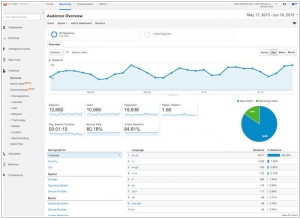
Google Analytics lets you measure your advertising ROI as well as track your Flash, video, and social networking sites and applications. Google Analytics shows you the full customer picture across ads and videos, websites and social tools, tablets and smartphones. That makes it easier to serve your current customers and win new ones.
Google Analytics and Optimizely are both powerful tools that play distinct roles in the realm of website optimization and user experience. Google Analytics is a comprehensive web analytics platform that provides deep insights into website traffic, user behavior, conversion tracking, and audience demographics. It offers a wide range of features and reporting capabilities, allowing businesses to understand their website performance and make data-driven decisions to optimize their digital strategies.
Optimizely, on the other hand, is an experimentation platform that focuses on A/B testing, multivariate testing, and personalization. It enables businesses to create and run experiments to test different variations of their website or app and determine which version performs better in terms of conversions and user engagement. Optimizely offers a user-friendly interface for designing experiments, targeting specific audience segments, and analyzing experiment results to drive continuous optimization and improve the overall user experience.
See also: Top 10 Web Analytics software
Optimizely, on the other hand, is an experimentation platform that focuses on A/B testing, multivariate testing, and personalization. It enables businesses to create and run experiments to test different variations of their website or app and determine which version performs better in terms of conversions and user engagement. Optimizely offers a user-friendly interface for designing experiments, targeting specific audience segments, and analyzing experiment results to drive continuous optimization and improve the overall user experience.
See also: Top 10 Web Analytics software
Google Analytics vs Optimizely in our news:
2021. Optimizely to acquire Welcome to help marketers drive Customer Experience outcomes

Optimizely, a leading digital experience platform (DXP) provider, has announced a definitive agreement to acquire Welcome, a four-time Gartner Leader. Welcome combines the top capabilities of content marketing platforms (CMP), marketing resource management (MRM), and digital asset management (DAM) into a unified solution. This acquisition will enable the combined company to empower marketing teams worldwide to generate tangible business value by delivering improved customer experiences. In today's digital-first landscape, the internal marketer experience plays a pivotal role in shaping the external customer experience. Marketers, operating in an increasingly hybrid work environment, bear the responsibility of driving business growth and promptly adapting to the ever-evolving needs of the digital consumer. However, the complexity and fragmentation of the marketing stack hinder their ability to provide personalized and contextual experiences, as well as create relevant content at scale.
2020. Google Analytics 4 allows to combine website and mobile app statistics
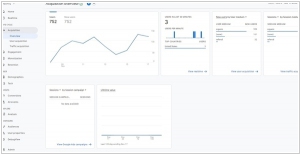
Google has introduced a major update to its website analytics platform, Google Analytics 4. The key highlight of this update is the inclusion of a new resource type called App + Web. This feature allows users to combine data from both websites and mobile applications, enabling the creation of unified reports for comprehensive analysis. The functionality of analytics tools has been significantly revamped, with improved visualization of user behavior and the adoption of a new model called "Event + Parameter." Notably, the updated platform now offers enhanced capabilities for online stores. Users can create user groups based on the likelihood of placing an order or leaving the website within the next seven days. It is important to note that the option to continue using the previous version, Universal Analytics (UA), is still available. Users have the flexibility to work with both Universal Analytics and Google Analytics 4 simultaneously by creating new resources with dual analytics capabilities (UA + GA4). This dual approach is designed to accommodate users who may find exclusive use of the new tool less convenient in certain scenarios.
2020. Episerver to acquire Optimizely, the world’s leading Experience Optimization platform
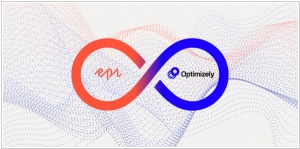
Episerver, recognized as a leader in the Gartner Magic Quadrant for Digital Experience Platforms, has made an official announcement regarding its agreement to acquire Optimizely, the leading provider in experimentation and optimization solutions. This strategic union results in the formation of the most advanced digital experience platform, enabling the optimization of every customer interaction throughout the entire user journey. By combining Episerver's expertise in creating digital experiences through content and commerce with Optimizely's capabilities in experimentation and optimization across touchpoints, marketers gain the power to develop experiences that continually improve and evolve over time.
2016. Google Analytics adds automated insights
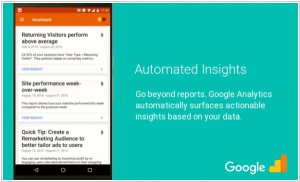
Google Analytics has introduced enhanced functionality on iOS and Android platforms, allowing users to easily identify crucial trends within their data. On the Assistant screen, users will now have access to automatically generated insights. For instance, if there is a sudden surge in new users on your website or app, Google Analytics will prominently highlight this information and provide details regarding the source of these new users. Likewise, for e-commerce companies, it can pinpoint the products experiencing the most significant increase in sales. Although Google Analytics was already tracking this information, it is now presented in a concise and easily digestible card format. This enhancement enables businesses to swiftly access the relevant information without the need to navigate through multiple pages, reducing the chances of overlooking important data changes.
2016. New Google Analytics app improves user experience
The most recent update of the Google Analytics app (version 3.0) introduces several features inspired by chat platforms. Google has streamlined the app's navigation, resulting in a cleaner interface that enhances the visibility of reports. Metrics and dimensions are now displayed within scorecards, which bear a resemblance to the widgets found in Google Analytics dashboards. These scorecards present a concise overview of the top dimensions within a specific report. By utilizing familiar tablet and smartphone user behaviors, such as swiping, users can easily navigate to their desired dimensions. The condensed listing of scorecards also facilitates the effortless discovery and bookmarking of reports.
2015. Google Analytics adds Calculated Metrics
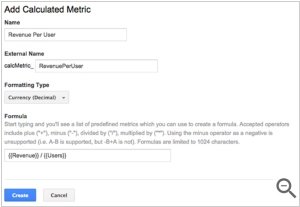
Google has introduced a new feature in Google Analytics called Calculated Metrics. This feature enables users to create custom metrics based on existing metrics within Google Analytics. It eliminates the need to navigate away from the report, streamlining the process of performing calculations. Essentially, Calculated Metrics serves as a convenient tool for adding compound metrics that frequently arise in business intelligence discussions. For instance, an e-commerce retailer could generate a currency conversion metric by multiplying the Revenue metric from Google Analytics reports with the current conversion rate. To access Calculated Metrics, users can find it in the admin panel under the view column.
2015. Website personalization service Optimizely raises $58M
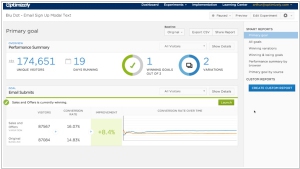
Optimizely, the renowned company synonymous with A/B testing, has secured $58 million in funding. While Optimizely is widely recognized for its tools that enable customers to test different variations of their websites and determine the most effective one, it has been expanding its horizons. The company ventured into new territories by introducing Optimizely for iOS last year, followed by the recent launch of Optimizely Personalization. As a result, Optimizely has established itself as a leading service for optimizing websites (according to Alexa) and mobile apps (according to MixRank). Esteemed customers such as CNN, Microsoft, and Virgin America have entrusted Optimizely with their optimization needs. Despite the existence of numerous A/B testing tools in the market, Optimizely stands out by prioritizing the development of "best in class products" and fostering integrations with a diverse range of partners.
2015. A/B website testing service Optimizely to focuse on personalized experience
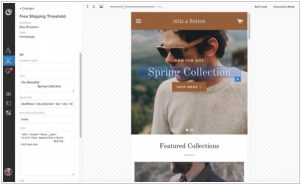
A/B website testing tool Optimizely extends its capabilities beyond testing by introducing a new product called Optimizely Personalization, enabling online publishers to deliver customized experiences to their users. The personalization features of this product can be categorized into four key areas. Firstly, there is the ability to connect data, allowing companies to utilize their customer data and integrate information from services like BlueKai, Tealium, and Lotame. Secondly, there is the functionality to discover audiences, where Optimizely suggests various audience segments that companies can target with personalized experiences. Thirdly, there is the option to optimize experiences, allowing the creation of different pages tailored to specific segments. Lastly, there is the capability to understand impact, enabling the analysis of data to determine the effectiveness of personalization in driving engagement, purchases, or any other desired outcomes.
2015. Optimizely unveiled revolutionary website statistics engine
The website optimization platform Optimizely has introduced a new feature called Stats Engine, which enhances the company's experience optimization platform. This feature provides test results that are consistently valid and unrestricted by the limitations of traditional statistical analysis. Developed in partnership with statisticians from Stanford University, Stats Engine leverages innovative statistical analysis techniques. Alongside the platform's proprietary algorithms, it enables customers to interpret and take action on data with greater speed and confidence than ever before, according to the company.
2014. Google Analytics is available on iPhone
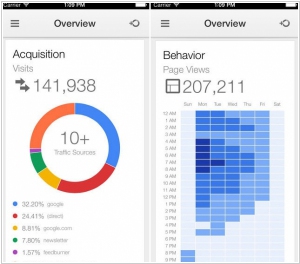
After more than two years of launching Google Analytics for Android, Google has now introduced a version of Google Analytics specifically designed for the iPhone. This app enables users to conveniently monitor their website analytics, including real-time visitor reports, directly from their smartphones. In addition to providing real-time and time-based reports, the app offers insights into user behaviors, conversions, and more. The user interface (UI) of the app aligns with the aesthetic of other Google apps available for iOS. Moreover, the app leverages the sign-in capabilities of Gmail, Google+, and the standard Google app for iOS. It's important to note that Google Analytics for iPhone is currently not optimized for iPad, but there is hope that future updates will include support for iPads.





